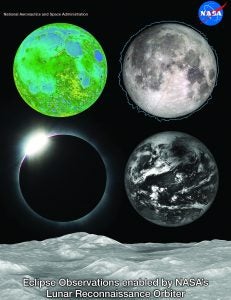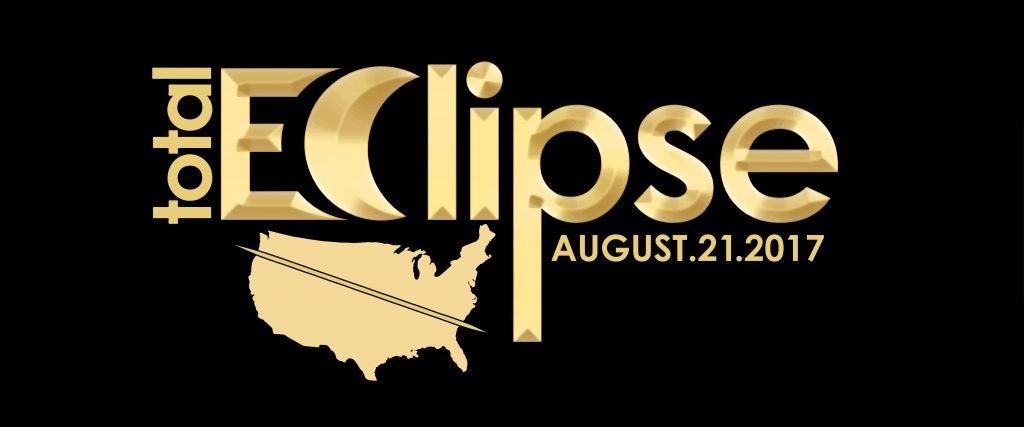THERE'S NO SUNSHINE
Campus events planned for solar eclipse
Students attending their first day of class on Aug. 21 at East Carolina University will get more than new professors and class schedules. They will experience the first total solar eclipse to take place over a portion of the United States in 38 years.
A solar eclipse occurs when the moon partially or completely covers the sun and the sun’s corona. Eastern North Carolina is not in the path of totality, so this area will not experience complete coverage of the sun by the moon, but it will be close.
“The moon will obstruct about 91 percent of the sun in our area. It will still be very noticeable – it will get pretty dark in Greenville,” said Lauren Mink, ECU’s continuity and emergency planner who also has a degree in meteorology.
During the peak of the eclipse it will look like dusk in the Greenville area, and automated lighting will likely turn on as it gets dark, explained Mink. In areas like Charlotte and Raleigh that will experience 95-98 percent coverage, it will look like twilight.
According to NASA’s website, all of North America will experience at least a partial eclipse. The path of totality – the locations where observers can witness the total eclipse – is a 70-mile wide path from Oregon to South Carolina. In Greenville, the moon will start moving in front of the sun beginning at 1:19 p.m. with the maximum eclipse occurring at 2:37 p.m. The event should end by 4:07 p.m.
ECU biology associate professor Dr. Tim Christensen plans to travel to Nashville, Tennessee for the eclipse. Outside of the classroom he enjoys astrophotography, and his work has been displayed in museums and galleries across the country.

Eclipse Observations enabled by NASA’s Lunar Reconnaissance Orbiter.
“These (eclipses) are rare and it is rarer still to be this close to the path of totality,” said Christensen.
ECU’s Department of Physics and Astronomy Club will host an event from 2:15 p.m. to 3:15 p.m. at the Howell Science Complex on Aug. 21. The first 200 to arrive will receive viewing glasses. Additional viewing opportunities are scheduled at Cynthia’s Lounge in Mendenhall Student Center on main campus and the Health Sciences Student Center near Starbucks. The events in the student centers are scheduled indoors where students can witness the change through large banks of windows and watch the live feed from NASA on big screen televisions. Watching the eclipse without proper eyewear can cause damage to the retinas, which is why the scheduled events are indoors.
Christensen said photographing the eclipse will be challenging because there are so many things going on at once. He must take into account the earth’s rotation and the change in exposure due to the moon slowly moving in front of the sun. Additionally, he has to take safety into mind as he plans to photograph what could be a once in a lifetime event.
“I need to have a special solar filter in place so I don’t cook my camera,” said Christensen.
Christensen hopes everyone takes advantage of having such a spectacular event occur close by.
“You may never see one again,” he said. “Many people report a feeling of deep wonder and awe when seeing day turn to night. You will likely get a profound sense of the grand geometry of our solar system.”
Safety
The most important safety tip for those planning to watch the eclipse outdoors is to have proper eyewear. Everyday sunglasses will not do the trick. Special eclipse viewing glasses are required, and NASA urges viewers to confirm that the glasses were made by one of five manufacturers approved by the American Astronomical Society. The list is available on NASA’s Eclipse 2017 website, www.nasa.gov/eclipse.
People wishing to safely view the eclipse through a telescope will also need solar filters or solar telescopes. Special lenses are also needed for cameras. Anyone viewing the sun through a camera without the proper lens is at risk of damaging their eyes.
Heavy traffic is also expected on major highways in the days immediately before and after Aug. 21 as people travel to places like South Carolina and Tennessee to be in the path of totality.
“No one should plan to travel towards the path of totality on the day of the eclipse,” said Mink. “Highways are anticipated to be gridlocked.”

